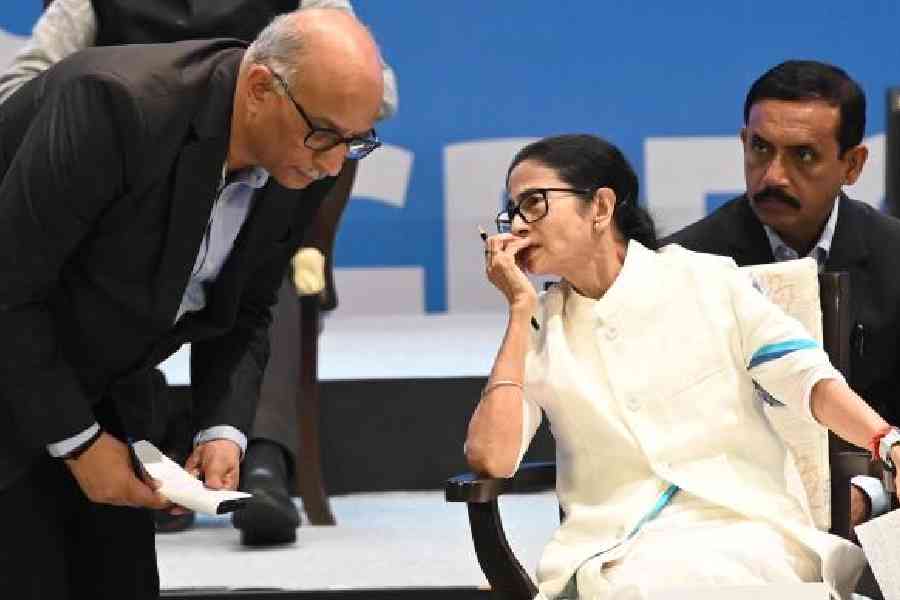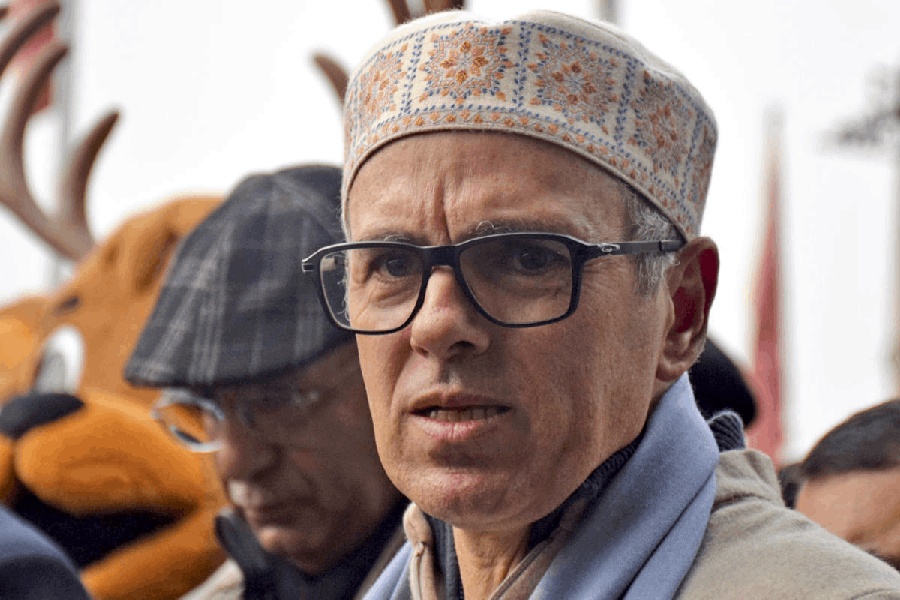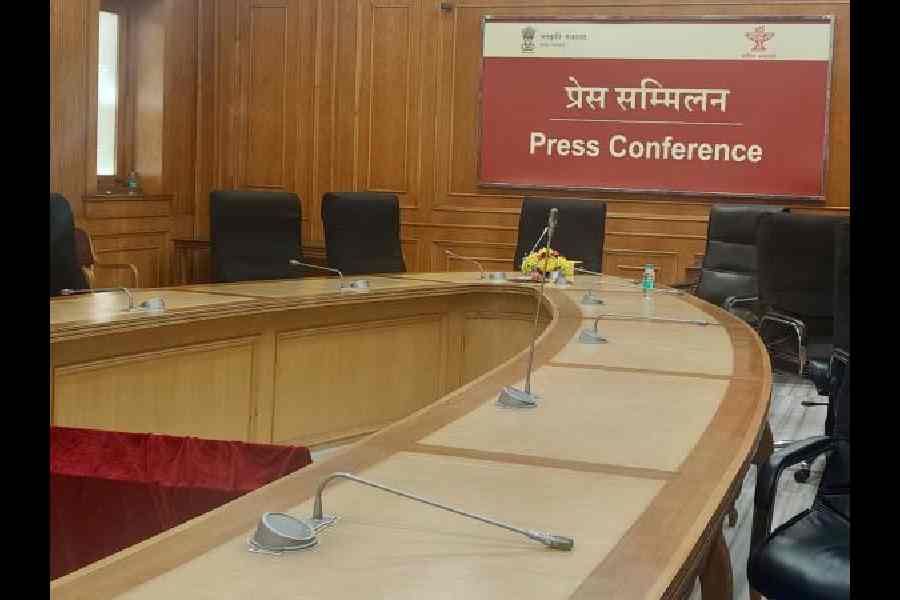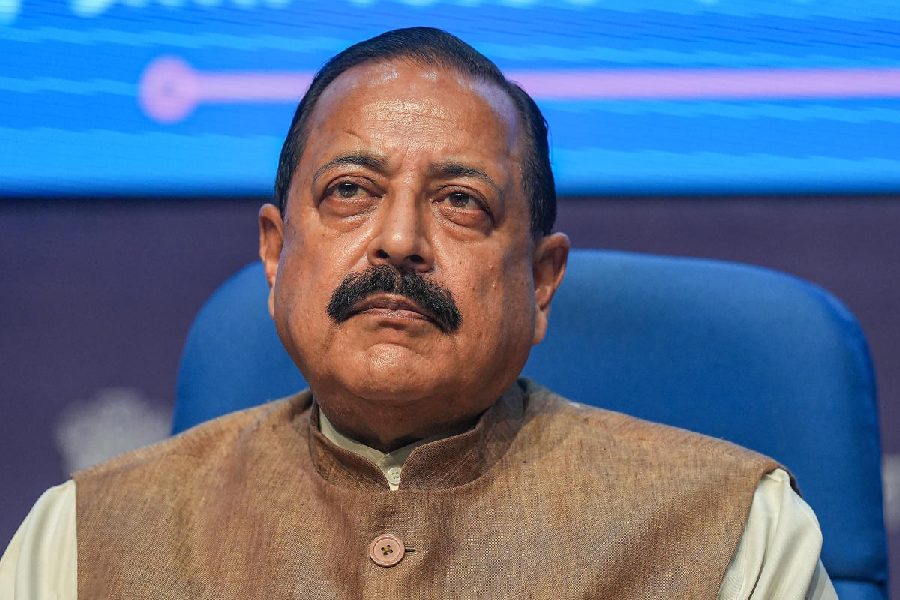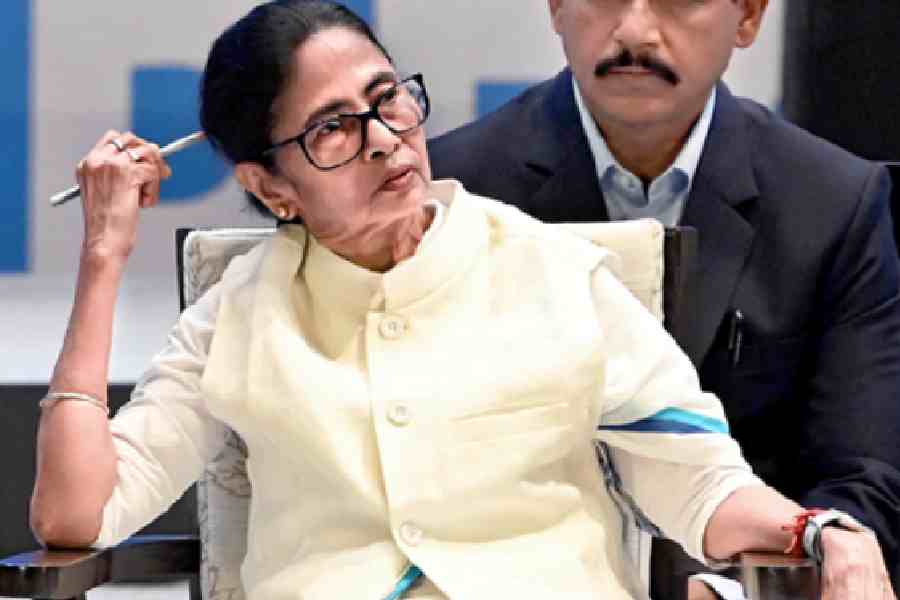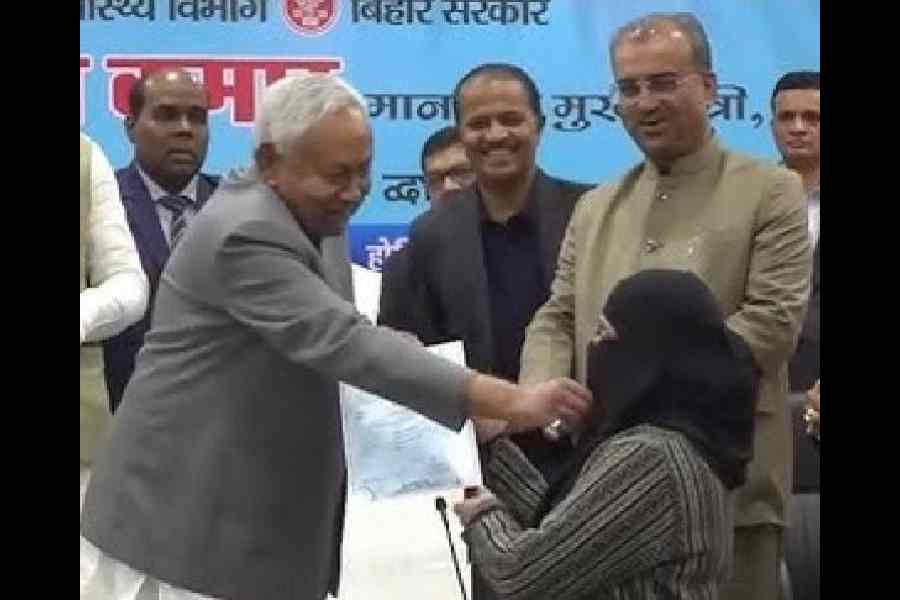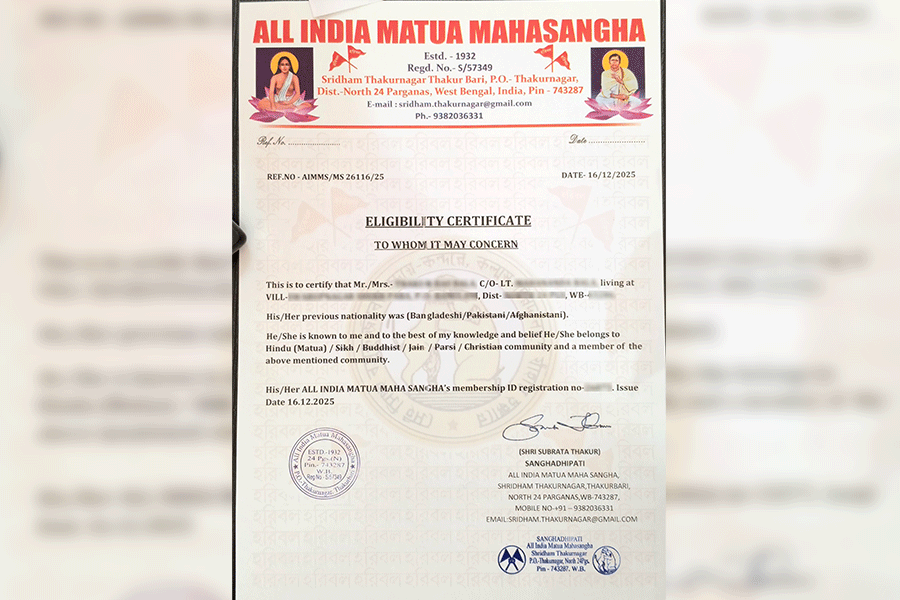 |
Mrinalini Banerjee is frantic with worry. Her daughter, who’s in her early teens, claims to be in love with her 55-year-old private tutor, who professes love for her as well. Banerjee, who works at a multinational company in Calcutta, has barred the tutor from entering her house, but her daughter continues to be in touch with him.
“They talk to each other over the phone. My daughter has become very aggressive these days. I can’t make her visit you,” Banerjee tells a Calcutta-based psychiatrist to whom she has turned for help.
The psychiatrist is worried too — fearful that Banerjee’s unhappy daughter may take her life. “She is showing signs of it,” says the therapist. “The girl might have developed some kind of sexual dependence on the man. She comes from a broken home. Hence she has turned to an outsider for emotional succour. If she is forced to sever ties with the man, she may attempt suicide.”
Nisha, another teenager, did just that. A few years ago, when she was 14, she made several attempts to kill herself over a failed love affair. “I was hospitalised five times in one month. At that time, I was going through a very bad phase. I lost interest in life, always felt drowsy and there was this feeling of guilt that I might be doing something wrong and that I should punish myself,” says Nisha, who’s been undergoing therapy for the past five years.
Her psychiatrist says that she has to continue her treatment. This is because a person who has made a suicide attempt is more likely to complete it than one who has only reached the stage of suicidal thoughts.
Nisha has been saved. But not many are fortunate to get help in the nick of time. According to the State Crime Records Bureau, more and more children aged up to 14 are committing suicide every year. In 2008, 516 children committed suicide across West Bengal. In 2007, 419 children killed themselves; in 2006, the number was 334.
Some psychiatrists say that 9-14 is a vulnerable age group. “The risk factors for adolescents or young adults include frequent mood swings, impulsive behaviour, aggression and dichotomous thinking. They generally think in black and white during this period. So if anything doesn’t fit into this scheme, they lose their balance,” explains Sanjay Sen, consultant psychiatrist, AMRI Hospitals.
In fact, West Bengal accounts for the highest percentage of suicides — 16.9 per cent — among children aged up to 14 years in the country, says the last available report (2007) on Accidental Deaths and Suicides in India prepared by the National Crime Records Bureau. Bengal is followed by Andhra Pradesh (315), Karnataka (236) and Madhya Pradesh (205).
Clearly, in the early teen category, West Bengal is the suicide capital of India.
Strikingly too, many of the suicides occur in the districts, with Nadia (59 in 2008), Jalpaiguri (55) and North 24 Parganas (48) topping the list. That’s attributed to examination pressure. “The pressure is higher in the small towns of Bengal because there is less awareness in these areas about stress management among children and teachers are less equipped to deal with the mental health problems of students,” says Rima Mukherjee, a Calcutta-based psychiatrist. “The pressure begins at the age of 12-13 when parents are desperate to push their children into academic streams that can help them become doctors, engineers or chartered accountants.”
Yet cold statistics can hardly lay bare the terrible pain a teen suicide can cause a family. “We had a loving family. I couldn’t see any sign of depression in my girl. It was just an ordinary day when she chose to end her life,” says Sebanti Ghosh, a housewife in Calcutta. About 15 years ago, her teenage daughter, who studied in a well known south Calcutta school, killed herself by consuming pesticide because her father was opposed to her growing intimacy with a local boy. Her father died a few years later, unable to deal with the loss. “My younger daughter, in school then, had a trying time. Her friends used to discuss her sister’s death among themselves,” says Ghosh.
One of the major problems is that signs of depression cannot be easily detected in children, especially those between 9 and 14. “Often, the symptoms are entirely invisible,” admits Chayanika Singh, a city-based clinical and child psychologist.
But studies have shown that one in two youths who killed themselves talked to their parents or peers about suicide, says Paramita Mitra Bhaumik, consultant clinical and rehabilitation psychologist who’s associated with the Belle Vue Clinic in Calcutta.
Mental health experts also point out that most of the suicides in the 9 to 14 age category are acts of impulse or aggression. “Generally speaking, suicide needs a lot of aggression to overcome our basic human instinct to protect our lives. This level of impulse or aggression is usually very high among children or teenagers,” says Sen.
Mental health experts normally deal with three kinds of suicide cases — attempted suicides, completed suicides and self-harm cases. “There is an increasing tendency among teenagers these days to inflict self-harm — like slashing their wrists. This category runs a higher risk of suicide. We are increasingly getting such cases in our clinics,” says Bhaumik.
Depression among children or adolescents also seems to be on the rise in the state. The Child Development Centre at Apollo Gleneagles, Calcutta, has registered a 15-20 per cent rise in child depression cases, says Jai Ranjan Ram, a consultant psychiatrist there.
“This trend is alarming because generally two thirds of suicide cases can be linked to depression,” says Sen.
Most deaths — 70 per cent, estimates Mukherjee — are related to exam pressure. Economist Avirup Sarkar explains why. “Bengal is unique in this regard. Our socio-economic aspirations are inextricably linked to education. This can be the single most important factor that contributes to the high rate of teen suicide in Bengal.”
“I deal with parents who tell their children, ‘Why don’t you die?’ if they get poor grades,” says Mukherjee. “I get 5-10 per cent more cases during the time of exams or results.”
A volunteer at a suicide-prevention helpline in Calcutta, who prefers not to be identified, agrees that the period of board exams and results are a stressful time. “We get numerous calls from distraught teenagers around exam time. Sometimes they are apprehensive that their results might not meet parents’ expectations and they fear meeting relatives who constantly ask them how they have fared,” he says. “At this time, they do get suicidal thoughts.”
Teen infatuation and family problems are other areas of concern. “I get cases even from far-flung areas like Bolpur where children feel angry and suicidal because they have seen parents break up, thanks to extra-marital affairs,” says Bhaumik.
State records also show that “unknown” causes account for a huge number of suicides among children aged up to 14. In 2008, there were 262 such cases, 233 in 2007 and 42 in 2006.
“Suicide is still a stigma in our society. So many people wouldn’t even report suicides in their families,” says Sunit Kaur, deputy director, Lifeline Foundation, which runs a helpline in Calcutta.
Satyajit Ash, psychiatrist and founder-member of Mon Foundation which promotes mental health among students in Bengal, offers an explanation for the “unknown” causes. “We tend to focus on the precipitating factor or the trigger rather than the core issue. For example, we say that a child killed himself because his teacher rebuked him. So we point the finger at the teacher, overlooking the fact that the child might already have been facing some inner turmoil before he took a drastic step. So we term the cause ‘frivolous’ without delving into what actually ailed the child,” he says.
He feels that life skill education (where students learn how to manage time, cope with failure, show empathy, resist drugs and other addictions and so on) which helps children cope with everyday stress can be effective in preventing suicide. “Teachers have to be sensitised or trained in detecting signs in children. Unlike Kerala or Maharashtra, West Bengal is still not implementing life skill education effectively,” he says.
However, the West Bengal school education department says that it already has a system in place. “We call it ‘lifestyle education’ modelled on Unicef guidelines. It is being implemented in all government schools. Teachers are being trained as well. Mental hygiene is very much a part of it,” says D.G. Ghatak, deputy director, school education department, West Bengal.
Some private schools have been taking this seriously. “I was invited to conduct workshops in more than 40 schools last year,” says Salony Priya, counselling psychologist, associated with Heritage School and DPS Megacity, Calcutta.
But counsellors say that the onus is ultimately on parents. “If you want to save your child, look within,” Singh says. After all, the deaths don’t come without a warning. Pay heed before it’s too late.
State of suicide
Suicides among children up to 14 years
2008
No. of boys who killed themselves: 275
Causes:
Exam failure: 44
Family problems: 49
Unknown: 82
Other causes: 73
No. of suicides among girls: 241
Causes:
Exam failure: 41
Family probs: 30
Affairs: 35
Unknown: 58
Other causes: 49
Boys + girls = 516


